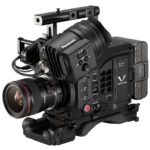
Get Your Story Seen With Invisible VFX
Posted on Feb 9, 2016 by Alex Fice
Did you notice the CG butterfly, the CG mines and the ships, in the BBC’s ‘Poldark’?
Sci-fi writer William Gibson once commented “…the street has its own use for things”- meaning that most technologies get co-opted in different ways than expected, and eventually make their way to street level and open access. Take VFX (Visual Effects); once only associated with Hollywood films it is now almost ubiquitous.
As I’m fond of telling parents who come to open days at my University who think VFX is only about sci-fi robots and explosions, they need to remember they are voraciously consuming VFX themselves. They had all watched 2015’s hit TV series Poldark. Did they notice the CG butterfly? The CG mines? The ships?
No, because they were engrossed in the story. And that’s the point – without these invisible, seemingly ordinary elements, the story would be diminished. Good VFX shouldn’t be noticed, just like the use of camera focal length or depth of field. VFX is only successful if you forget it’s there.
In film making there’s a revolution going on but no-one can see it because it’s invisible. New film makers are now able to tell a wider range of richer, more exciting stories. VFX is now just another option in the film maker’s armoury.
However there’s a problem – budding film makers aren’t aware of how they might use VFX to enhance stories and save money – for any kind of film. VFX isn’t taught in the right way to new film makers, meaning its hard for them to factor it into their scripts.
“Between 2011 and 2014, the number of domestic UK films has fallen by half, from 306 in 2010 to 154 in 2014. Almost all of this decline has been limited to films budgeted under £500,000” noted writer and producer Stephen Follows, based on recent BFI figures.
This means a well-spring of UK film making talent is dwindling. Ironically it seems it is becoming too hard to make films at a time when the tech has never been more accessible.
I believe one way to stem this decline is to enable new low-budget and no-budget film makers to understand and utilise VFX themselves, rather than buy it in. Give them the ability to make their own VFX, for free, to unleash potential new stories.
So Norwich University of the Arts has got together with FXHOME, the makers of fantastic free VFX software Hitfilm, and world class VFX company MPC to create “Visual Effects for Guerrilla Filmmakers” a four week free online course that shares expertise and even gives access to free software. Our philosophy is to give enough practical tuition, combined with advice and anecdotes from VFX artists and new guerrilla film makers, to help film makers across the world tell great stories and paint new cinematic pictures. No technical knowledge of VFX is needed, just a passion to extend and transform what the film maker shoots through their lens- whatever genre.
With short video clips from film makers explaining sometimes unorthodox methods and tips to get the job done, this course blends clear jargon free software tuition with artistic practice. It’s for film makers who haven’t got the time to read manuals, or the resources to hire in a VFX supervisor, but who want to produce ambitious new films where what the audience remembers is the power of the storytelling.
If you’re interested in film making on a minimal budget, register on this course, add a new tool to your film making repertoire over 4 weeks, and change the quality of your films forever!
Free online Visual Effects course to register click here
Saint John Walker is Course Leader in VFX at Norwich University of the Arts, and author of the “Visual Effects for Guerrilla Filmmakers” course, and the Core Skills of VFX Handbook for Creative Skillset.








